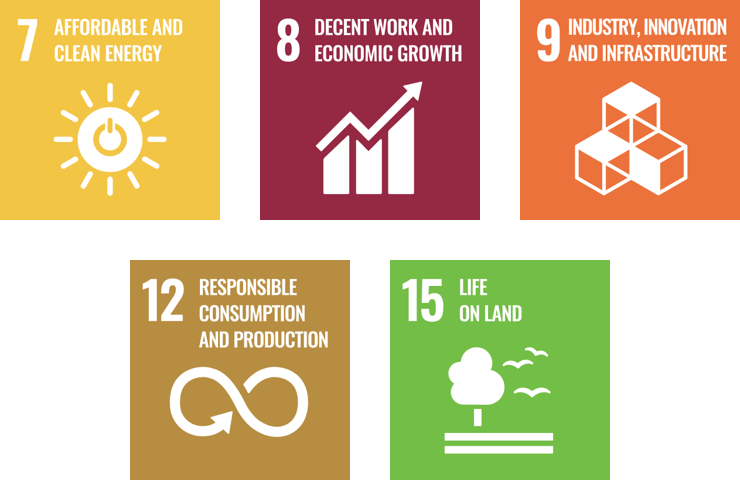Scope 1 emissions:
Company facilities, vehicle fleet
-64 percent by 2030 (compared to 2021)
Our key areas of action are at the centre of our strategic sustainability goals. We will consistently pursue these goals until 2025.
Goal 1
We are aware of our impact on the climate, and we’re working to reduce it. We’re therefore recording our greenhouse gas emissions and drawing up a reduction plan. We are pursuing ambitious goals with regard to the emissions we can influence directly (Scope 1 and 2) and are identifying relevant potentials for reduction in the case of indirect emissions (Scope 3).

With our climate strategy, we are setting ambitious climate goals for 2035 and 2045 and are taking comprehensive measures to reduce greenhouse gas emissions.
TransnetBW has defined milestones to monitor the achievement of its targets:
These targets were identified and set using the Science-Based Targets Initiative (SBTi) approach, but have not been officially validated.
At over 98 percent, the largest share of TransnetBW’s direct and indirect CO₂ emissions is caused by grid losses during electricity transmission. This is also where the greatest strategic leverage to reduce emissions lies.
TransnetBW's aim is to actively drive forward the decarbonisation of the energy industry. We are committed to ensuring that politicians and regulators also create the conditions to jointly achieve the climate targets in accordance with the 1.5-degree path of the Paris Agreement.
We are focusing on measures that have a high potential to reduce emissions or an important signal effect for TransnetBW, including in the following areas:
We are constantly working to improve the availability and quality of our data to enable us to monitor our progress towards our goals.
Our Climate Action Plan forms the central basis of our climate strategy. It contains a detailed greenhouse gas balance sheet, our climate targets, and specific interim targets and measures for reducing emissions. This allows us to create transparency about our progress toward climate neutrality and our contribution to the decarbonization of the energy industry.
Goal 2
We are focusing rigorously on efficient use, responsible handling and reduced consumption of natural resources, and wherever we can, we are applying the principle of the circular economy.
More on this in our sustainability report

Goal 3
We are continuing to expand our leading role in the operation of innovative infrastructure within the European transmission grid and using our expertise to actively shape the sustainable transformation of the energy system. We are focusing on strong relationships in order to work together to develop new solutions and fields of business.

Goal 4
We actively encourage an organisation and a corporate culture that value diversity, in which inclusiveness and equal opportunities are applied in practice. It puts people and their physical and mental well-being first.

Goal 5
To us, doing business sustainably, being able to adapt and innovate, and practising networked thinking are key future-oriented skills. We therefore systematically align our employee upskilling and knowledge transfers relating to methods and professional knowledge with this understanding.
